Exploring the World of NodeMCU ESP8266: A Beginner's Guide
Arduino NodMCU
NodeMCU ESP8266 is a low-cost open-source IoT platform based on the ESP8266 WiFi module. It allows easy prototyping and development of WiFi-enabled projects. With its compact size and built-in USB, it supports Lua scripting and Arduino IDE, making it popular among hobbyists and developers for various IoT applications, including home automation and sensor networks.
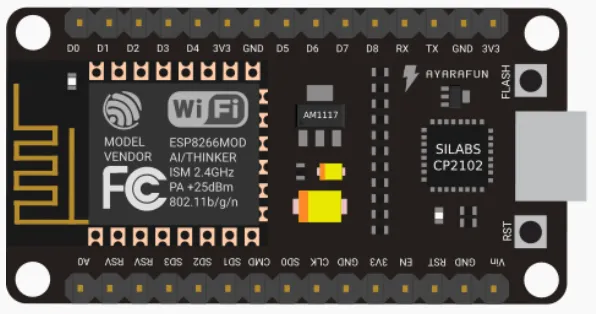
ESP8266 - WiFi
The ESP8266 is a versatile and costeffective WiFi module used in IoT projects. It features a low-power, 32- bit microcontroller with built-in WiFi connectivity. Popular for its compact size, low cost, and Arduino IDE support, it's ideal for creating IoT devices, home automation, and wireless sensor networks.
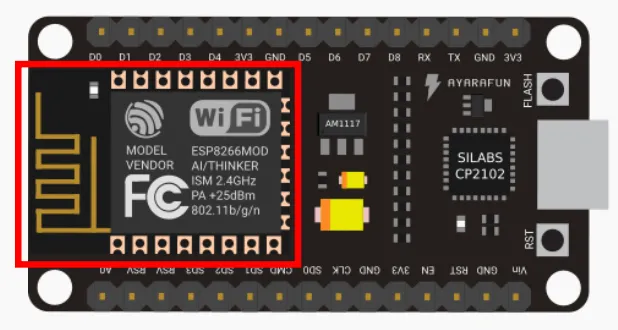
AM1117
The AM1117 is a voltage regulator IC commonly used in electronic circuits to provide a stable and regulated output voltage. It's known for its efficiency and low dropout voltage, making it suitable for powering various components, such as microcontrollers and sensors. It comes in various voltage and current ratings, offering flexibility in design.
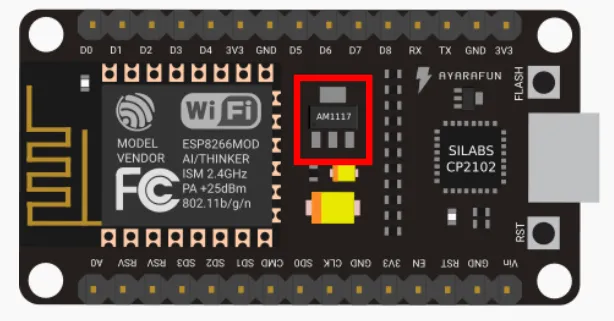
CP2102
The CP2102 is a USB-to-UART bridge controller integrated circuit commonly used to interface microcontrollers and other serial devices with a computer via USB. It provides a simple and reliable way to establish a serial communication link, making it popular for programming and debugging microcontrollers, especially in embedded systems development.
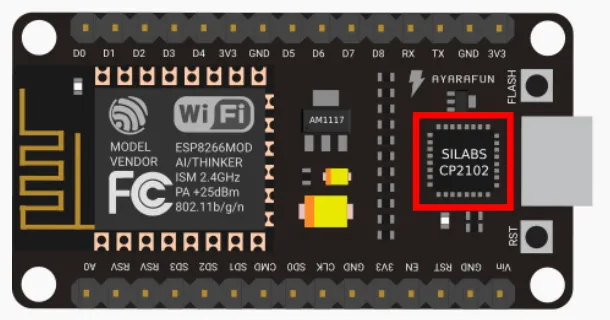
Flash Switch
The flash switch in a NodeMCU refers to a physical button or switch often used to toggle the device into programming mode. It allows users to upload new firmware or code to the NodeMCU's ESP8266 microcontroller easily. By pressing the flash switch while powering the device, it enters the programming mode, simplifying firmware updates.
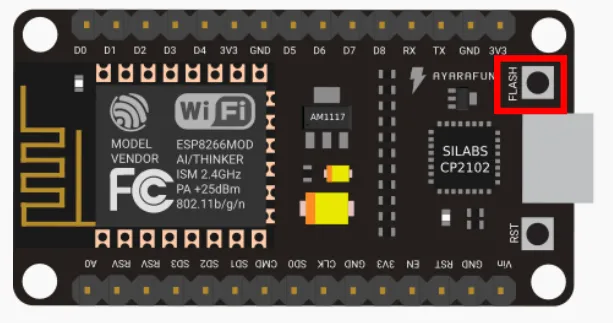
USB
This USB port in a Node MCU / ESP8266 module serves multiple purposes, such as powering the NodeMCU, enabling programming and debugging via USB-to-UART (CP2102) connectivity, and facilitating data transfer between a computer and the NodeMCU for IoT projects and firmware updates.
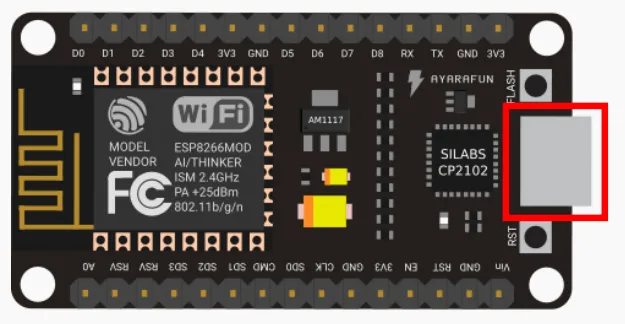
Reset Switch
The NodeMCU development board often includes a reset switch, which is a physical button used to reset the board quickly. Pressing the reset switch momentarily restarts the NodeMCU, allowing for troubleshooting, reprogramming, or restoring default settings without the need to power cycle the board or manually disconnect/reconnect power sources.
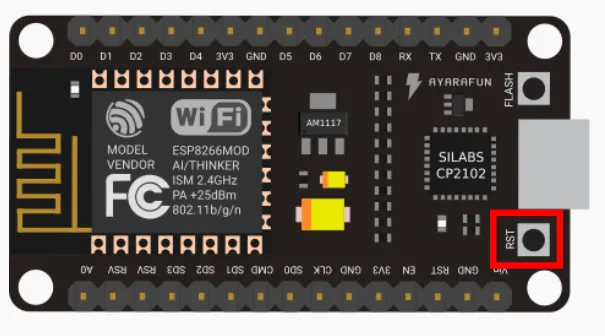
GPIO Pins
NodeMCU development boards typically have multiple GeneralPurpose Input/output (GPIO) pins. The exact number and configuration can vary between different NodeMCU models, but a common configuration includes several digital GPIO pins (usually labeled from D0 to D8), as well as some analog pins (A0). These GPIO pins can be used for various purposes, such as reading sensors, controlling actuators, or communicating with other devices. Developers can program these pins using the Arduino IDE or other compatible softwares.

PinOut
These are the basic pins used for general-purpose input/output, power, and communication on the ESP32. It's important to refer to the ESP32 datasheet and documentation for comprehensive details, including additional functionalities, special pins, and hardware-specific features that might not be covered here.
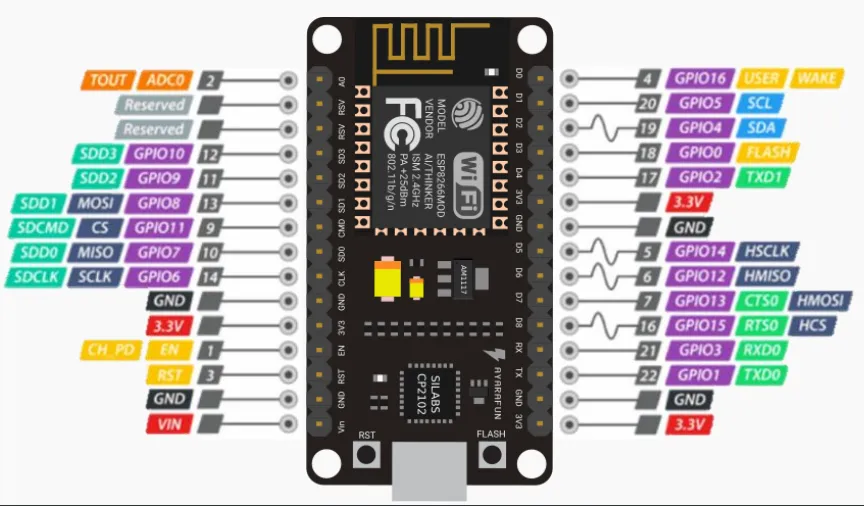
Conclusion
As you continue your journey with the NodeMCU ESP8266, remember to explore further, experiment with various sensors and actuators, and integrate your newfound knowledge to create innovative and meaningful IoT applications. Happy tinkering!